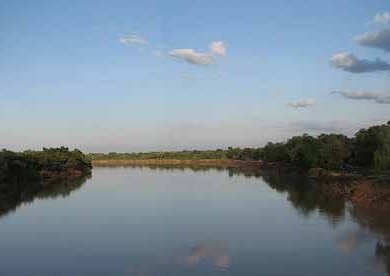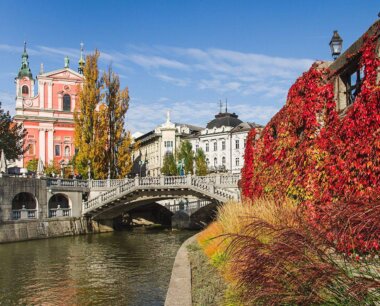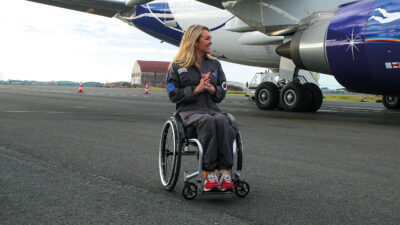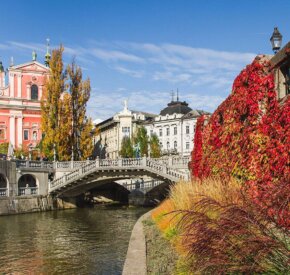
Microlight fantastic – microlighting in Zambia
No time for a full time safari? No problem – skim over Zambia on an unforgettable microlight flight
I’ve had a couple of bad experiences with crocs – this is the only time I can get my own back!” John Coppinger laughed gleefully while dozens of crocodiles scurried into the water as we passed overhead in a microlight. Although we were relatively low I was surprised at the wimpish reaction of the reptiles; the hippos just ignored us. “Perhaps they think we’re a pterodactyl,” suggested John. “Crocodiles have been around long enough to remember what those are.”
A former pilot, John switched his affections to microlighting 12 years ago. “My wife was delighted I was giving up flying, so you can imagine her reaction when I got a microlight!” he explained. John and his wife Carol run Remote Africa Safaris, based on the banks of the Luangwa River on the eastern border of Zambia’s South Luangwa National Park. Although they offer game drives and walking safaris, it is the microlighting that makes it particularly unique.
We’d set out at 5.45am, when the light was coming up and the air was still. I was strapped in behind John, wearing the requisite helmet and headset. After a quick test to check that John and I could hear each other through the headphones, we bounced along a track to the nearby airstrip and took off, swinging towards the northern boundary of the park.
The view was a revelation. From the air I could see the twists and turns, the channels and oxbows of the Luangwa River, and where it had changed course over the years. I was visiting in September, the driest time of the year along with October, and the waterholes were barren, the river dwindling. For the visitor, the dearth of vegetation and the congregation of wildlife around the remaining water makes the animals easy to spot. Indeed, the game viewing had been some of the best I’d ever experienced – including seeing four different leopards, all in the daytime.
But one of the most amazing sights was yet to come. “Want to see a few hippos?” asked John as we swept around a bend in the river. Ahead, the water was dark with a mass of hippos crammed together in a huge concentration. “Must be at least 500 there!”
He admitted this was his least favourite time of year
“It’s very hard on the large herbivores and it’s distressing to see some of them dying off.” Sure enough, we spotted a dead hippo in the shallow water, legs in the air. Over 100 crocodiles were loitering nearby, kept at bay by two other hippos standing guard either side of their dead companion. “They’ll probably stay there for the day, but will have to move eventually,” explained John. “It’s mostly hippos that are affected – we’ll be seeing a lot more of that over the next month until the rains arrive in November.
“You’ll have to come back in the Green Season and see the river in flood,” hollered John. “The light is fantastic at the end of the rains, and the flying mind-blowing.”
Looking at the scene below it was hard to imagine it green and lush. Although there was painfully little grass around, the one food source that was still available was the huge fruit of the sausage tree – so named because its fruit, which can reach up to a metre in length, resembles a huge… guess what? The sausages feed many animals, including antelopes and elephants, but the Luangwa Valley is the only place where hippos have been spotted eating them. From our lofty vantage point we could clearly see several hippo trails leading from the river to each tree.
As we turned away from the river John pointed out Mwana Mutumba, a lagoon with a tragic past. Children whose upper incisors came though before their lower ones, known as chinkula children, were once considered a bad omen; until the middle of the last century they would be thrown into this lake to drown before they could bring bad luck to their people.
More happily, one wildlife highlight followed another. We passed over a flock of 50 flying pelicans, which seemed unperturbed by the huge beast soaring above them. Then we spotted a group of skittish Cookson’s wildebeest, a rarely seen sub-species, unique to the Luangwa Valley. Perhaps most awesome of all was the huge herd of buffalo, at least 600-strong. “This is the typical size of a herd here,” revealed John when I expressed my astonishment.
Always something new to see
Flying low above the river, we rounded a bend and surprised a family of elephants. Although we were higher than them, the feisty matriarch raised her trunk and flapped her ears at us in irritation. “Whoops! I didn’t mean to startle them,” said John as we swiftly banked away.
As we fled, John pointed out a croc with a very visible tumour on her back. “She’s had that for more than three years, but it’s getting much larger now. It’s going to become a real problem for her.” I couldn’t help but let out a sympathetic “Ahhh”, much to John’s amusement. “Don’t feel sorry for her. She took a lot of interest in me when I was canoeing once!”
As we reluctantly headed back to camp, John admitted: “I still always get a thrill from going out in the microlight. There’s always something fresh to see. This is the best safari there is.”
Flying home, he pointed out the spot where David Livingstone crossed the river in December 1866. Livingstone said about the area: ‘I will make this land better known to men that it may become one of their haunts. It is impossible to describe its luxuriance.’ What more would Livingstone have said if he could have soared above it like an eagle?
Remote Africa Safaris (www.remoteafrica.com) is based at Tafika Camp. Tafika is open from mid-May to November each year. It is also open for river safaris in the Green Season (mid-February to mid-April). A stay can be organised through Wildlife Worldwide (www.wildlifeworldwide.com).
He admitted this was his least favourite time of year
“It’s very hard on the large herbivores and it’s distressing to see some of them dying off.” Sure enough, we spotted a dead hippo in the shallow water, legs in the air. Over 100 crocodiles were loitering nearby, kept at bay by two other hippos standing guard either side of their dead companion. “They’ll probably stay there for the day, but will have to move eventually,” explained John. “It’s mostly hippos that are affected – we’ll be seeing a lot more of that over the next month until the rains arrive in November.
“You’ll have to come back in the Green Season and see the river in flood,” hollered John. “The light is fantastic at the end of the rains, and the flying mind-blowing.”
Looking at the scene below it was hard to imagine it green and lush. Although there was painfully little grass around, the one food source that was still available was the huge fruit of the sausage tree – so named because its fruit, which can reach up to a metre in length, resembles a huge… guess what? The sausages feed many animals, including antelopes and elephants, but the Luangwa Valley is the only place where hippos have been spotted eating them. From our lofty vantage point we could clearly see several hippo trails leading from the river to each tree.
As we turned away from the river John pointed out Mwana Mutumba, a lagoon with a tragic past. Children whose upper incisors came though before their lower ones, known as chinkula children, were once considered a bad omen; until the middle of the last century they would be thrown into this lake to drown before they could bring bad luck to their people.
More happily, one wildlife highlight followed another. We passed over a flock of 50 flying pelicans, which seemed unperturbed by the huge beast soaring above them. Then we spotted a group of skittish Cookson’s wildebeest, a rarely seen sub-species, unique to the Luangwa Valley. Perhaps most awesome of all was the huge herd of buffalo, at least 600-strong. “This is the typical size of a herd here,” revealed John when I expressed my astonishment.
Always something new to see
Flying low above the river, we rounded a bend and surprised a family of elephants. Although we were higher than them, the feisty matriarch raised her trunk and flapped her ears at us in irritation. “Whoops! I didn’t mean to startle them,” said John as we swiftly banked away.
As we fled, John pointed out a croc with a very visible tumour on her back. “She’s had that for more than three years, but it’s getting much larger now. It’s going to become a real problem for her.” I couldn’t help but let out a sympathetic “Ahhh”, much to John’s amusement. “Don’t feel sorry for her. She took a lot of interest in me when I was canoeing once!”
As we reluctantly headed back to camp, John admitted: “I still always get a thrill from going out in the microlight. There’s always something fresh to see. This is the best safari there is.”
Flying home, he pointed out the spot where David Livingstone crossed the river in December 1866. Livingstone said about the area: ‘I will make this land better known to men that it may become one of their haunts. It is impossible to describe its luxuriance.’ What more would Livingstone have said if he could have soared above it like an eagle?
Remote Africa Safaris (www.remoteafrica.com) is based at Tafika Camp. Tafika is open from mid-May to November each year. It is also open for river safaris in the Green Season (mid-February to mid-April). A stay can be organised through Wildlife Worldwide (www.wildlifeworldwide.com).
Always something new to see
Flying low above the river, we rounded a bend and surprised a family of elephants. Although we were higher than them, the feisty matriarch raised her trunk and flapped her ears at us in irritation. “Whoops! I didn’t mean to startle them,” said John as we swiftly banked away.
As we fled, John pointed out a croc with a very visible tumour on her back. “She’s had that for more than three years, but it’s getting much larger now. It’s going to become a real problem for her.” I couldn’t help but let out a sympathetic “Ahhh”, much to John’s amusement. “Don’t feel sorry for her. She took a lot of interest in me when I was canoeing once!”
As we reluctantly headed back to camp, John admitted: “I still always get a thrill from going out in the microlight. There’s always something fresh to see. This is the best safari there is.”
Flying home, he pointed out the spot where David Livingstone crossed the river in December 1866. Livingstone said about the area: ‘I will make this land better known to men that it may become one of their haunts. It is impossible to describe its luxuriance.’ What more would Livingstone have said if he could have soared above it like an eagle?
Remote Africa Safaris (www.remoteafrica.com) is based at Tafika Camp. Tafika is open from mid-May to November each year. It is also open for river safaris in the Green Season (mid-February to mid-April). A stay can be organised through Wildlife Worldwide (www.wildlifeworldwide.com).




















